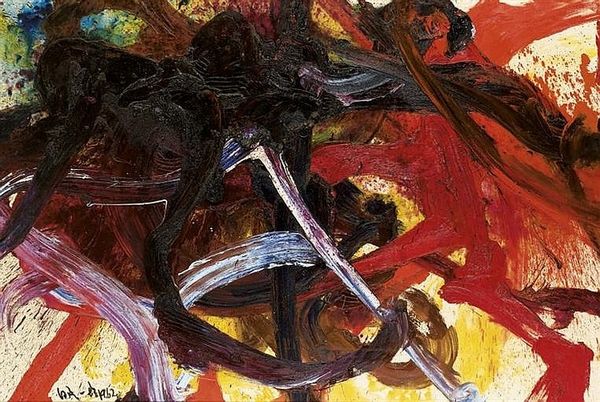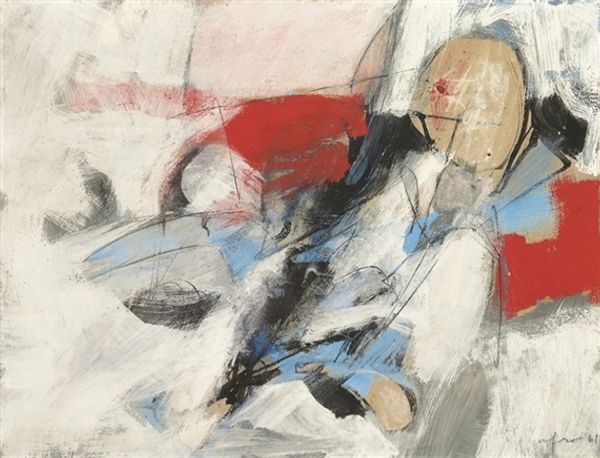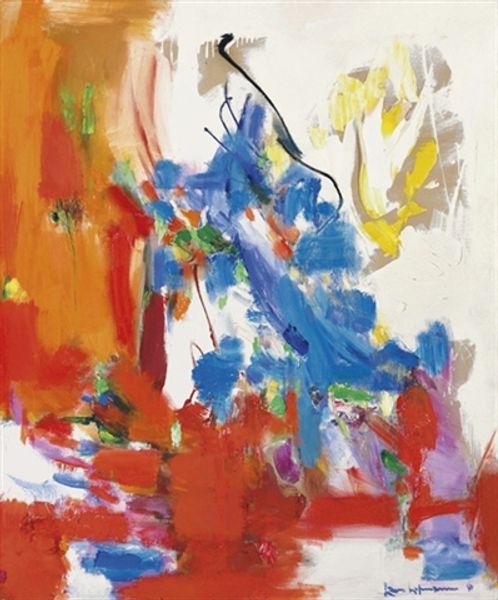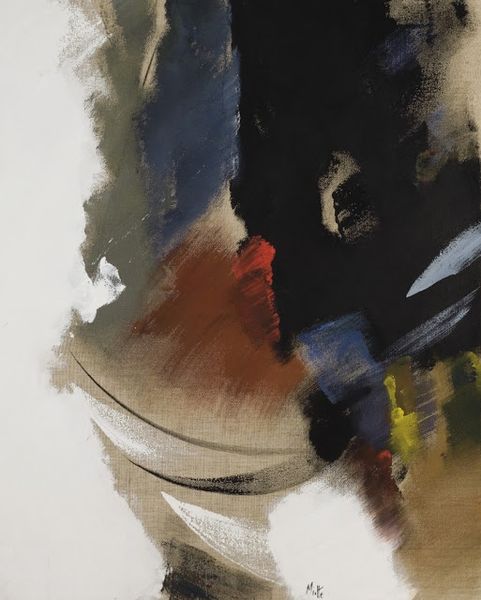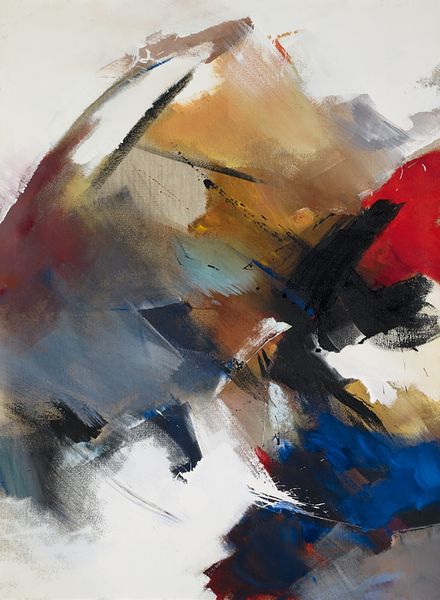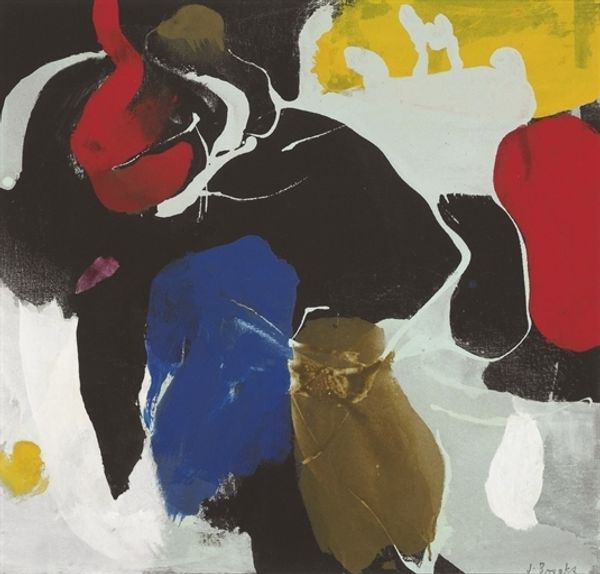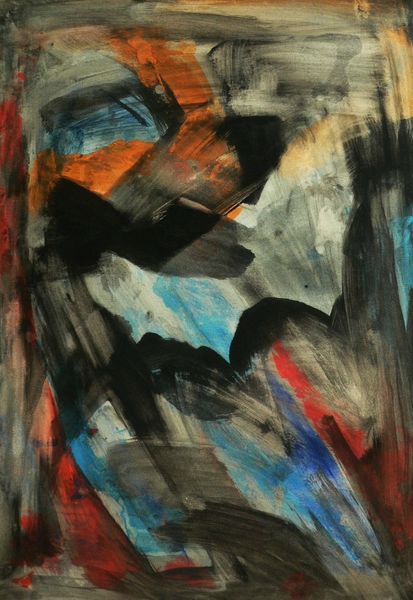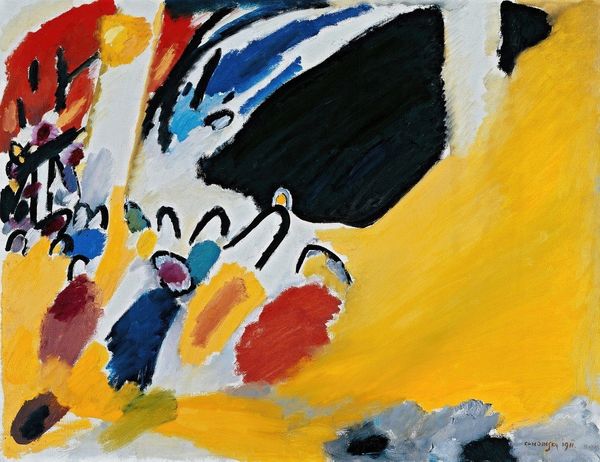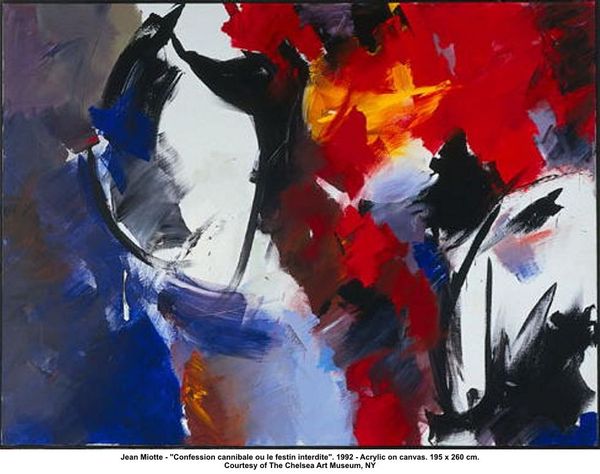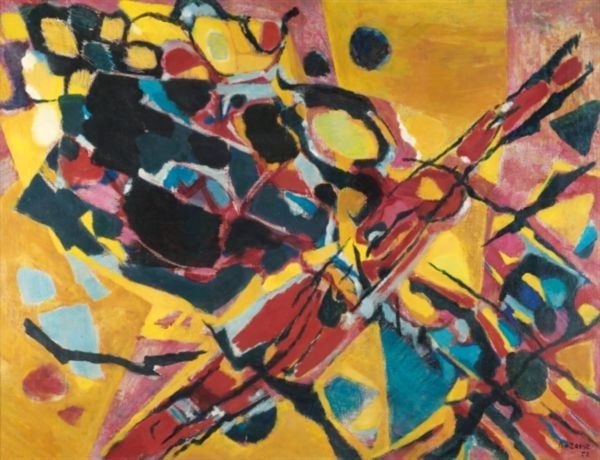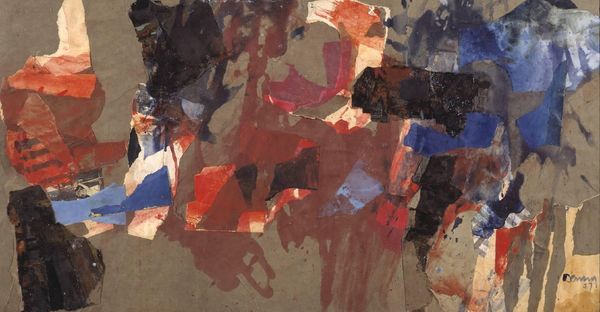
painting, oil-paint
abstract-expressionism
abstract expressionism
abstract painting
painting
oil-paint
form
oil painting
abstraction
line
expressionist
Copyright: Jean Miotte,Fair Use
Curator: I am immediately drawn to the tension between control and chaos in this piece; the color choices seem both deliberate and spontaneously applied. Editor: Indeed. We're looking at Jean Miotte's "Rythme bleu," an oil painting created in 1959. Note how the artist orchestrates the interplay between bold colors, predominantly blues and blacks, to convey energy. It embodies the spirit of abstract expressionism through material. Curator: Absolutely. The dynamism inherent in this painting reminds me of the broader historical narrative of the postwar period—a time rife with conflict yet also a drive toward experimentation and freedom of expression. The brushstrokes, while seemingly haphazard, reveal a sophisticated understanding of how color impacts emotion and perception. Consider how the deep blues offset the darker blacks, adding a certain vulnerability. Editor: Let’s talk about the making of it. One can almost envision Miotte at work, his physical movements shaping the thick oil paint on the canvas. It is so material. This isn't just about emotional expression; it's about a tangible, laborious engagement with the medium itself. The varying textures and depths—areas where the paint is thinly spread against impasto—suggest a process of layering, adding to its social texture. Curator: I see this dialogue of materials and the artist's physical presence reflecting a broader societal conversation, the push and pull between established norms and new ideas that were shaking up the mid-century world. Abstraction was about breaking away, defying traditional representation, and reclaiming subjective experiences. Miotte’s forms capture that tension beautifully. Editor: Ultimately, analyzing "Rythme bleu" reveals not only the artist’s individual expression but also provides insight into the collective anxieties and aspirations of his era. We can understand how material conditions played a significant part. Curator: It becomes an intimate exploration of identity within the confines of historical events, social struggles, and the very human search for meaning in an era of upheaval. Editor: Exactly, it brings the making of the artwork to bear on society as a whole. It allows us to read an epoch's anxieties through its engagement with materiality.
Comments
No comments
Be the first to comment and join the conversation on the ultimate creative platform.

